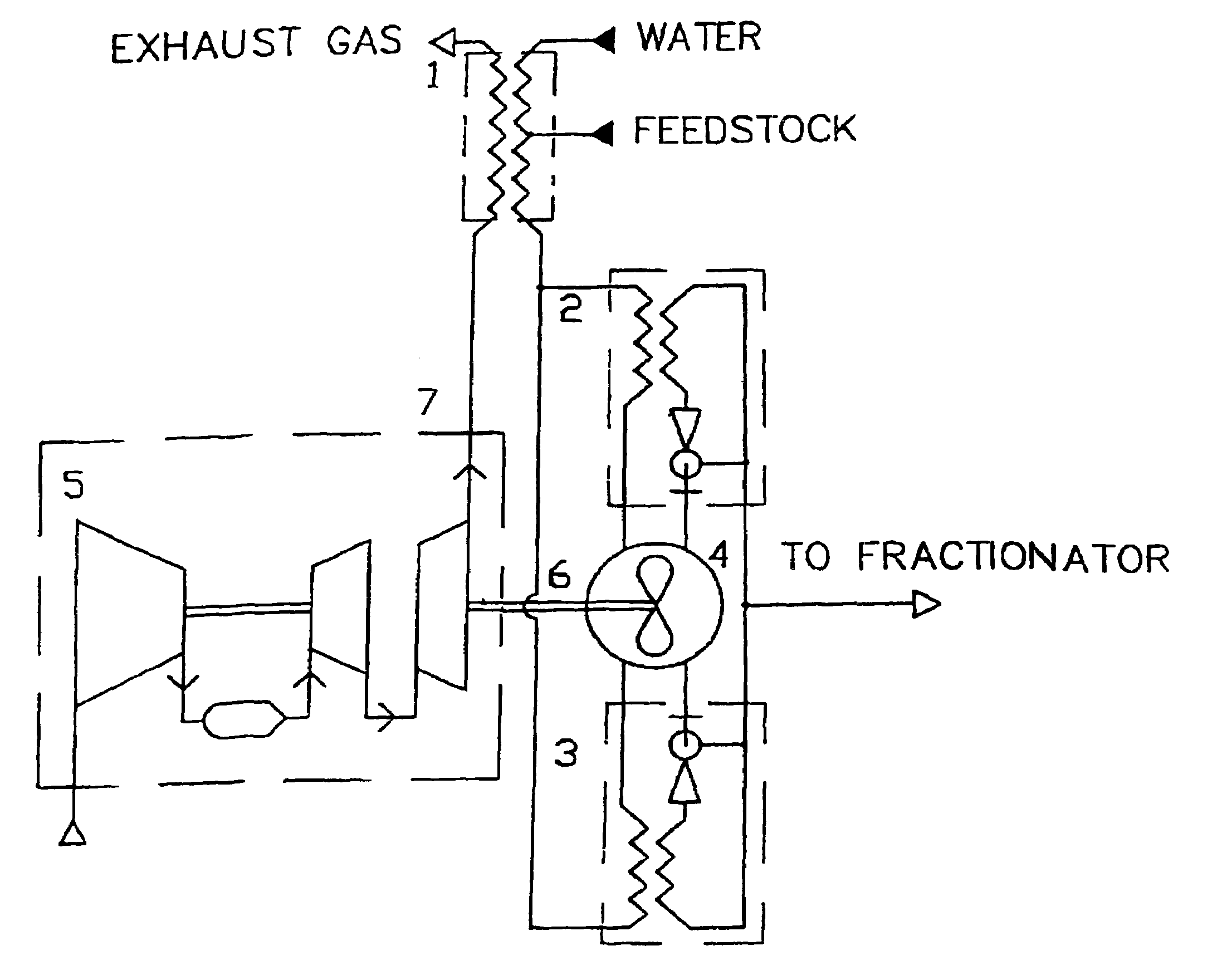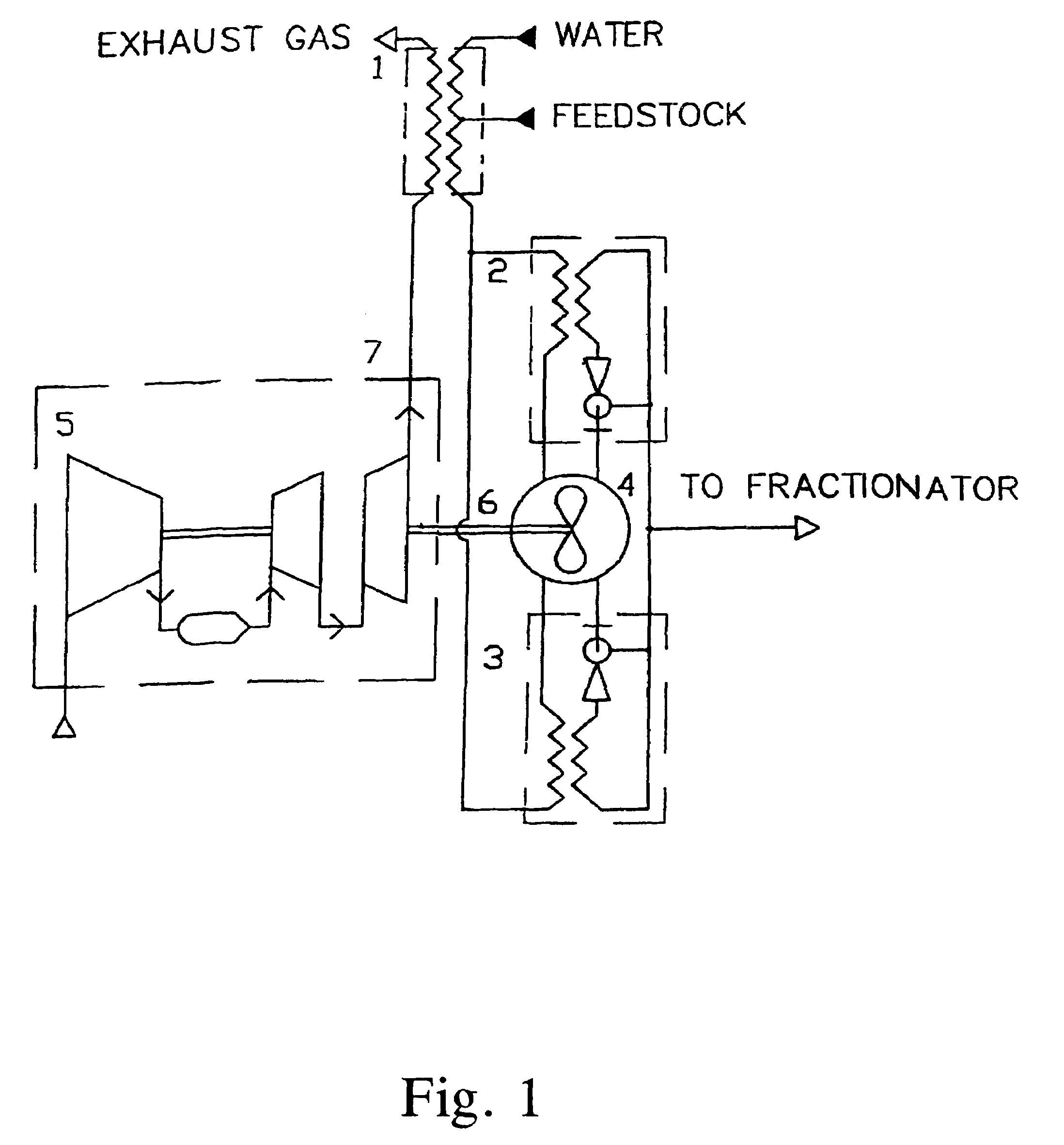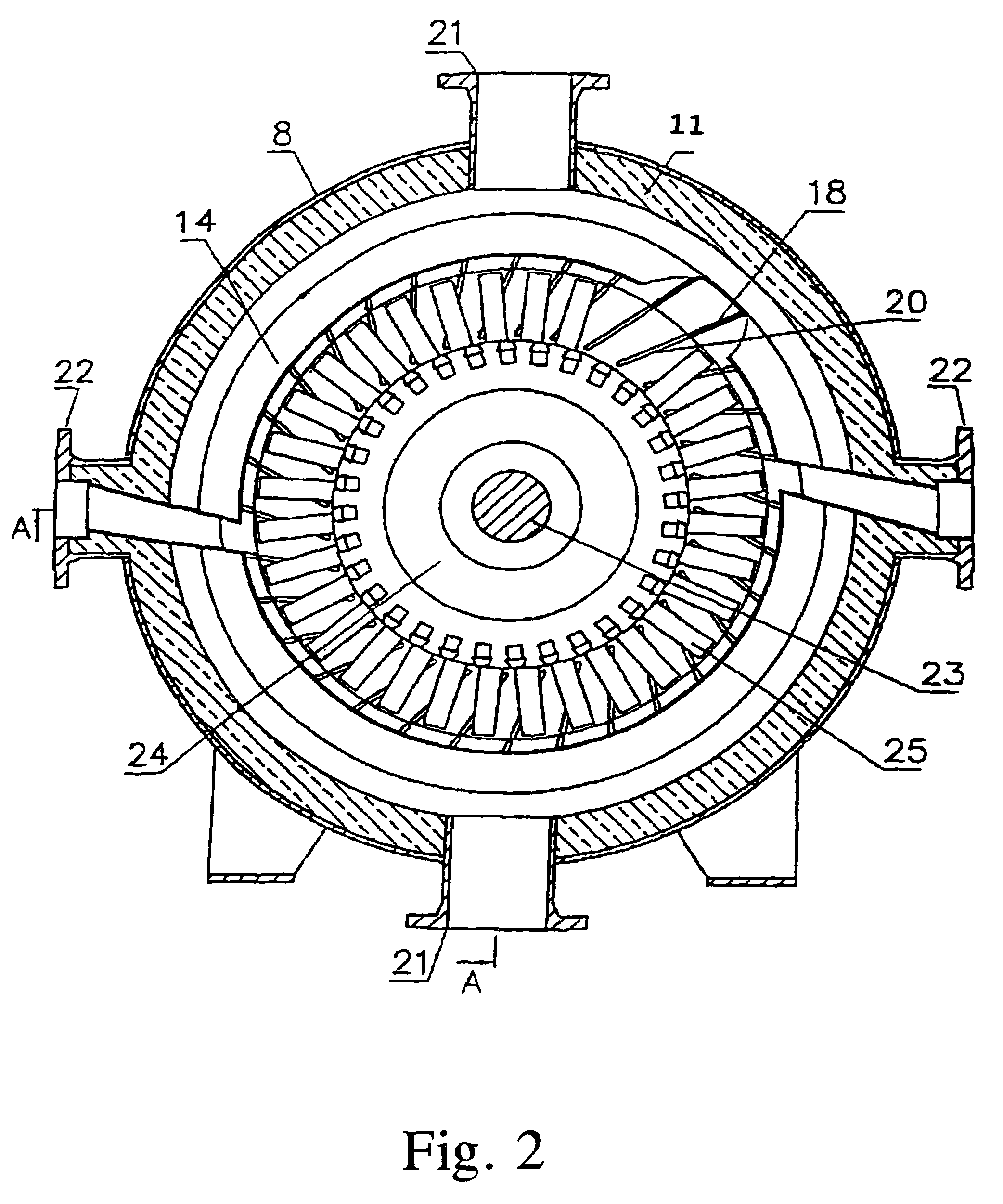Process for producing low-molecular olefins by pyrolysis of hydrocarbons
a technology of hydrocarbon pyrolysis and hydrocarbons, which is applied in the field of petrochemical industry, can solve the problems of increasing the yield of less valuable acetylene, overheating the cracking tube, and reducing the productivity of the pyrolysis plant, and achieves the effect of reducing the energy consumption of process conducting
- Summary
- Abstract
- Description
- Claims
- Application Information
AI Technical Summary
Benefits of technology
Problems solved by technology
Method used
Image
Examples
Embodiment Construction
[0055]The installation (FIG. 1) for realization of the process includes preheater 1, apparatuses 2 and 3 for quenching of product stream, reactor 4, gas-turbine engine 5 connected with reactor 4 by shaft 6, and with the preheater 1 by exhaust pipe 7.
[0056]Preheating a feedstock and steam-diluent in the first stage is carried out in the preheater 1. The hydrocarbon feed form outside source (not shown in drawings) is conveyed by pressure into the preheater 1 configured as a shell-tube heat exchanger. The exhaust gas from the gas-turbine engine 5 is discharged into the intertubular space of this heat exchanger. From an outside source (not shown in drawings) water is conveyed by pressure into the preheater where the water it is evaporated, and resulting steam-diluent is mixed with the hydrocarbon feed.
[0057]Preheating a feedstock and steam-diluent in the second stage is carried out in the apparatuses 2 and 3 for quenching of product stream by utilization of heat of product stream leavin...
PUM
| Property | Measurement | Unit |
|---|---|---|
| outlet temperature | aaaaa | aaaaa |
| temperature | aaaaa | aaaaa |
| pressure | aaaaa | aaaaa |
Abstract
Description
Claims
Application Information
 Login to View More
Login to View More - R&D
- Intellectual Property
- Life Sciences
- Materials
- Tech Scout
- Unparalleled Data Quality
- Higher Quality Content
- 60% Fewer Hallucinations
Browse by: Latest US Patents, China's latest patents, Technical Efficacy Thesaurus, Application Domain, Technology Topic, Popular Technical Reports.
© 2025 PatSnap. All rights reserved.Legal|Privacy policy|Modern Slavery Act Transparency Statement|Sitemap|About US| Contact US: help@patsnap.com



